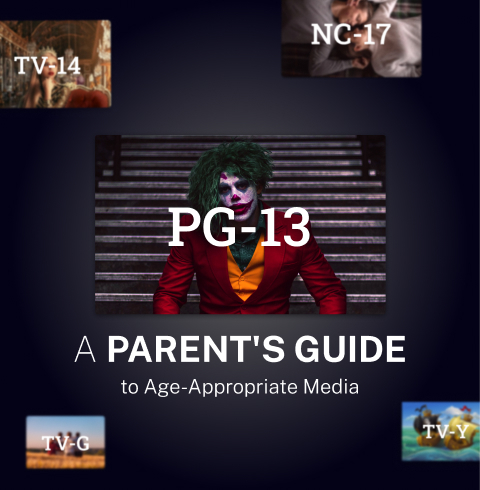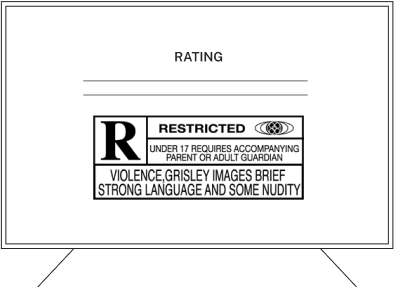What are the
TV Parental Guidelines?
The TV parental guidelines are the content rating system for TV shows here in the United States.
The guidelines were primarily developed in response to concerns across the country around increasing sexually explicit content, graphic violence, and the use of strong profanity in popular TV shows.
explicit
content
To this day, the guidelines remain “voluntary participation,” and the rating of TV content is determined by the broadcasting networks rather than by an independent organization.
As a result, the same show may have a different rating depending on the network on which it is broadcast and the time of day it is shown.
In addition to TV networks, streaming services such as Netflix and Hulu participate in the system, as do platforms such as iTunes and Google Play.

How have these
Guidelines Evolved?
The parental guidelines’ structure was based on the movie rating system, which had been in use since 1968, and which we will explore shortly.
Introduction of Content Descriptors
Shortly after the guidelines’ launch, many parents were expressing opinions that they didn’t find the system helpful.
The purpose of these descriptors, which remain in use today and are detailed below, is to highlight the type of potentially objectionable content present in a show, leading to the specific rating.
Length of Rating Display
Until June 2005, ratings appeared on screen for 7.5 seconds at the start of each episode, before increasing to 15 seconds.
One notable feature of rating display that isn’t standardized is the rating displays themselves, which often fall in line with a channel’s branding.
What do the
TV Ratings Mean?
There are currently seven TV ratings in use. Each TV rating is displayed in the same format.
TV-Y (All Children)
![]() Shows with a TV-Y rating should be suitable for all children to view. A TV-Y rating can apply both to animations and live-action content.
Shows with a TV-Y rating should be suitable for all children to view. A TV-Y rating can apply both to animations and live-action content.

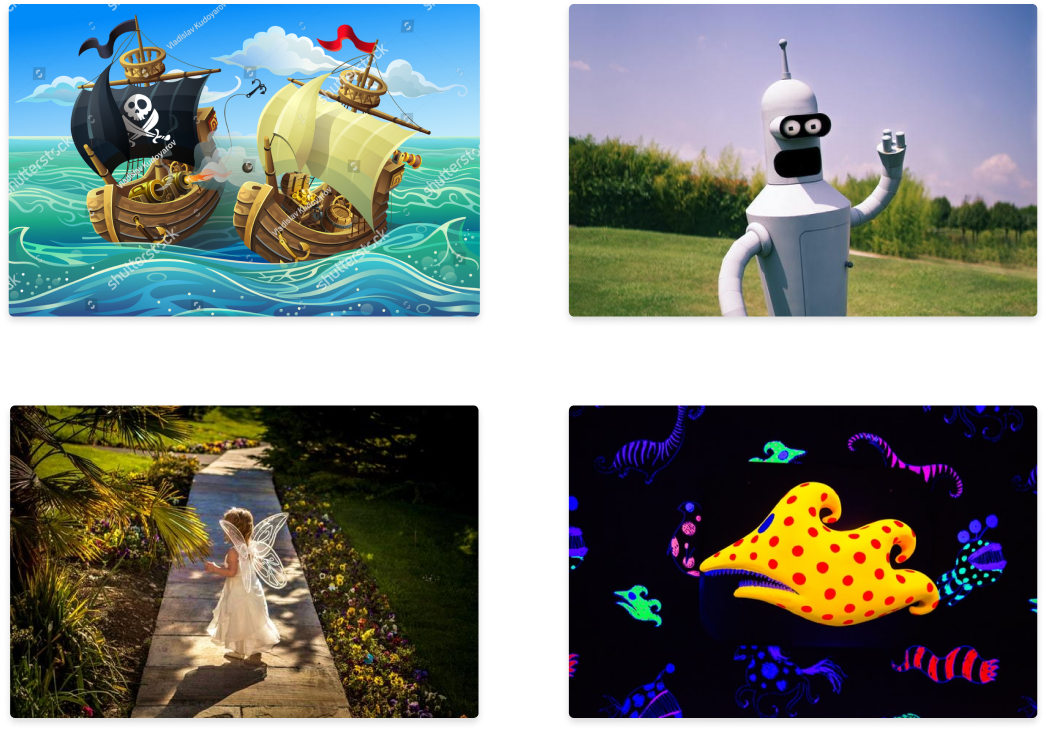
Dialog, general themes, and any other elements should specifically cater to young children, including those between the ages of two and six, and content should not frighten children of this age.
TV-Y7 (Directed to Older Children)
Shows with a TV-Y7 rating are deemed suitable for children over the age of seven. This rating exists to cater to older children who have developed early emotional recognition skills and can differentiate between a make-believe TV story and real life.
![]() TV-Y7 shows may contain mild fantasy violence or comedic violence, which younger children may find frightening.
TV-Y7 shows may contain mild fantasy violence or comedic violence, which younger children may find frightening.


Parents should consider the suitability of TV-Y7 shows for younger children based on the content descriptors provided.
TV-Y7-FV (Directed to Older Children – Contains Fantasy Violence)
TV-Y7-FV is a specific age rating designed as an extension to the TV-Y7 rating. It is the only rating to contain a particular content descriptor as standard.
![]() Broadcasters will assign this rating to shows that feature intense or more combative fantasy violence than shows that would otherwise qualify for and carry the TV-Y7 rating.
Broadcasters will assign this rating to shows that feature intense or more combative fantasy violence than shows that would otherwise qualify for and carry the TV-Y7 rating.


The “Fantasy Violence” content descriptor is exclusive to the TV-Y7-FV rating. Fantasy violence in shows with ratings above this one will use the violence content descriptor.
TV-G (General Audience)
![]() The TV-G rating describes shows that most parents would find suitable for children of all ages to watch.
The TV-G rating describes shows that most parents would find suitable for children of all ages to watch.
A TV-G rating doesn’t mean a show has been made specifically with an audience of children in mind. Still, it does mean that many parents may be happy to let their children watch on their own.
Shows with a TV-G rating will contain little or no violence and no profanity. TV-G rated shows will usually have no sexual dialogue or sexually suggestive scenarios.


TV-PG (Parental Guidance Suggested)
TV shows with a TV-PG rating include content that some parents may deem unsuitable for younger children. Therefore, parents may wish to watch such shows alongside their children and not leave them to watch on their own.
![]() A show may get a TV-PG rating because of the show’s overall theme or because the show contains one or more content descriptors.
A show may get a TV-PG rating because of the show’s overall theme or because the show contains one or more content descriptors.


Shows with a PG-TV rating should have, at most:
Some, but only a little, sexually suggestive dialogue
Infrequent use of profanity
Some sexual situations
Moderate violence
TV-14 (Parents Strongly Cautioned)
Shows with a TV-14 rating contain some themes and material that parents may find unsuitable for children under 14. Parents are strongly recommended to check their children’s consumption of such content under the TV parental guidelines. It is also suggested that parents watch such content alongside their children.
![]() As with TV-PG, a show may be rated TV-14 because of its overall theme or specific situations within an episode.
As with TV-PG, a show may be rated TV-14 because of its overall theme or specific situations within an episode.


A show with a TV-14 rating may include:
Frequent and/or intensely suggestive sexual dialogue
Frequent and strong use of profanity
Frequent and intense sexual situations
Frequent and intense
violence
TV-MA (Mature Audiences Only)
![]() Shows with a TV-MA rating are explicitly created for adult audiences. They may also be unsuitable for children under the age of 17.
Shows with a TV-MA rating are explicitly created for adult audiences. They may also be unsuitable for children under the age of 17.
However, parents may use discretion to determine which TV-MA content is suitable for their children to watch. However, it would be advisable for parents to watch any such content with their children if they were going to permit viewing.


A show with a TV-MA rating may include:
Frequent and strong use of indecent language
Explicit sexual activity
Graphic violence
What Content Descriptors Should You Look For?
Content descriptors effectively function as a sub-rating of a show. It isn’t necessary to remember what descriptors lead to a specific rating if you’re assessing a show’s suitability for your children, as the rating display tells you.
For example:
If a show is TV-PG, both the abbreviated content descriptor and the relevant note, such as “Some sexually suggested dialogue,” will display on the screen.

D stands for sexual or suggestive dialogue. The D descriptor is typically only used for TV-PG and TV-14 rated shows
L stands for the use of profanity and indecent language
S stands for sexual content
V stands for violence, while the FV tag, for fantasy violence, is only used in the TV-Y7-FV rating
It’s Worth Noting Shows are Rated on an Episodic Basis!
The way the TV parental guidelines are administered means each show is rated on an episodic basis. If your children enjoy watching a specific show, you should be mindful that some episodes may have a higher rating threshold, which may require you to check their suitability.
How are
Movies Rated?
Movies use the Motion Picture Association of America (MPAA) film rating system to highlight their suitability to specific audiences.
However, many theaters refuse to run non-rated movies. Therefore, it makes commercial sense for filmmakers to get a rating for their films.
In a similar vein, movies will often be produced with the specific aim of getting a particular rating.
For example:
A movie rated PG-13 may be far more commercially lucrative than a movie rated R. This is due to factors like merchandising opportunities and because many 16-year olds don’t want to go to the theater with their parents!
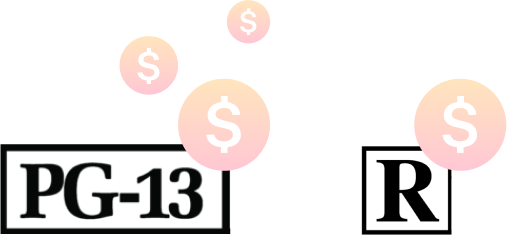
The MPAA has an independent division that administers ratings, the Classification & Ratings Administration (CARA).
History of
Movie Classification
The MPAA rating system was first established in 1968, replacing the Motion Picture Production Code that had been around since 1930. Since then, the rating system has undergone many tweaks and changes.
One of the most significant changes came with the introduction of the PG-13 rating on July 1, 1984.

Before this change, the rating jumped from PG (Parental Guidance) to R (Restricted, under 17s should be accompanied by a parent).
These ratings led to many movies getting PG ratings and concerns that small and pre-teen children were being exposed to gore and violence because of parents not knowing some PG movies’ content.
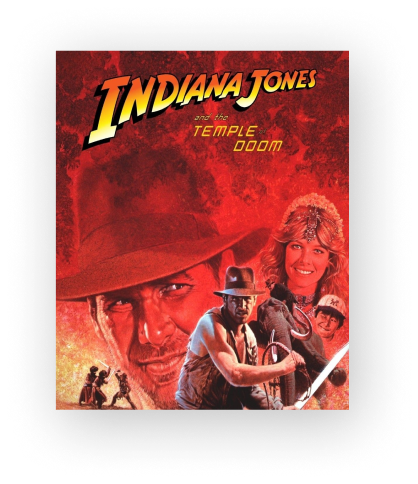
Indiana Jones and the Temple of Doom was one movie that raised concerns, and was released earlier in 1984.
As such, the introduction of the PG-13 rating allowed for a middle ground between PG and R.
At the same time as introducing this change, the MPAA also updated the way ratings for R-rated films were presented, explaining why a rating had been given, alongside the rating itself. Later, in 2000, the MPAA would extend this practice to all movies rated PG and above.
In 2018, to celebrate 50 years of the ratings, the MPAA released some notable statistics about their history:
By 2018, 29,791 films had been rated, with over
50% of these (17,202)
rated R
1.4% of all films
had their rating appealed, although the number of appeals dropped significantly following the introduction of PG-13

Since 1985,
over 70% of parents
have consistently said the rating system is “very or fairly useful”
What do
MPAA Ratings Mean?
While the ratings currently used have been the same since the adoption of NC-17 in 1990, the minimum age of admission for NC-17 movies changed from 17 to 18 in 1996. The current ratings system and guidelines, which are detailed in the table below, have been in place since then.
| Rating | Meaning |
|---|---|
|
G - General Audiences |
All ages can be admitted to these movies.
There is no content that most parents would deem unsuitable for viewing by children. |
|
PG - Parental Guidance Suggested |
Some material may not be suitable for children.
Parents are urged to give "parental guidance." PG movies may contain some material parents might not like their young children watching. |
|
PG-13 - Parents Strongly Cautioned |
Some material may be inappropriate for children under 13.
Parents are urged to be cautious, and they may deem some material in the movie to be inappropriate for pre-teen children. |
|
R - Restricted |
Under 17s can only be admitted with an accompanying parent or adult guardian.
R movies contain some adult material. Parents should learn more about the film before taking their young children with them. |
|
NC-17 – Adults Only |
No One 17 and Under Admitted.
Clearly adult. Children are not admitted under any circumstances. |
While these are the most commonly seen ratings on films, you may also encounter:
These labels may be used on movies that have not been submitted to receive a rating. These labels may also be used where there is an uncut/extended version of a film that contains different content to the theatrical, rated release. Movies with these labels may include additional warnings that the content may not be suitable for children.
It is a note commonly seen in trailers and other promotional material for movies. If you see this note, it is either because advertising is taking place far in advance of a movie release or because the rating process is currently ongoing.
Violence is not explicitly forbidden under any rating. However, CARA states:
- There must be minimal violence in G-rated films, and
non-intense violence in PG-rated movies. - Intense violence is permitted in PG-13 rated films. However, realistic, extreme, or persistent violence will lead to a movie being rated at least as R.

CARA states that G-rated films will only have language that, at most, goes “beyond polite conversation.” The use of profanity may be present in PG-rated movies. However, serious expletives and “sexually derived words” will usually lead to a movie getting at least a PG-13 rating.
While there are typically fewer than 1% of movies that have their ratings appealed today, appeals often relate to language.
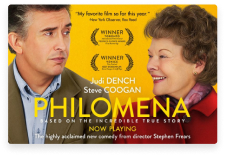 Philomena is one popular movie from the relatively recent past that saw its rating changed to PG-13 from R following an appeal.
Philomena is one popular movie from the relatively recent past that saw its rating changed to PG-13 from R following an appeal.

Any content related to substance use will automatically lead to a movie being rated at least PG-13. This would hold even if the rest of the film’s content would otherwise get a PG or G rating.
Characters smoking cigarettes are used as a factor when considering the use of substances when rating films, but a movie can still get a PG rating if it includes smoking depictions.

A film must not contain any nudity at all to be rated G.
Brief nudity will allow a movie to get a PG-rating. Anything longer than this will see a film given at least a PG-13 rating. However, nor the MPAA nor CARA specifically state how long “brief” is.
Any sexually-orientated nudity will usually lead to at least an R rating. As nudity traditionally generally referred to female nudity, a specific “male nudity” descriptor has been in use since 2010.

Perhaps surprisingly, there are no specific criteria around sexual content itself. The only certainty is that sex scenes will automatically disqualify a film from getting a G-rating.

How are
Video Games Rated?
The video games rating system in the United States is overseen by the Entertainment Software Rating Board (ESRB).
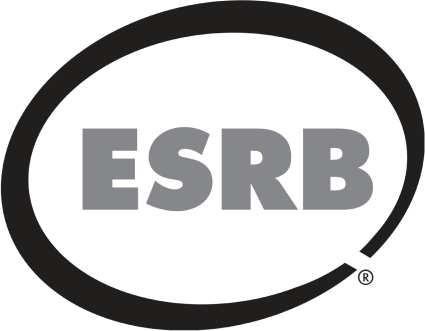
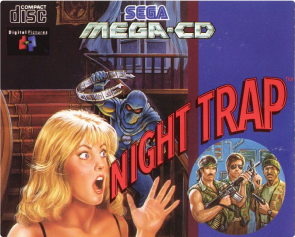
The ESRB was established in 1994, following congressional hearings based on concerns raised by parents following the release of the Mortal Kombat and Night Trap video games.

This controversy led to the adoption of a voluntary rating system, much like the MPAA film rating system. The ESRB system is based on the MPAA ratings. However, additional considerations must be made when assigning ratings owing to the interactivity element of video games.
While the system is voluntary, the ESRB decides the ratings, rather than game developers and publishers.
Evolution of
The Rating Process
While the ESRB was established in 1994, there had been concerns around objectionable content in video games dating as far back as 1976.
Following the video game crash of 1983, console manufacturers began to take the lead concerning video game content regulation.
Nintendo were pioneers in this respect, restricting the types of content third-party developers could produce. Nintendo also put barriers in place, ensuring unlicensed content couldn’t run on their Nintendo Entertainment System (NES).
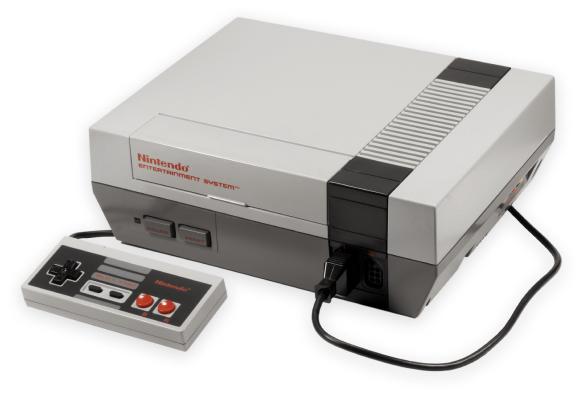
Despite calls for industry-wide regulation, in 1987, the Software Publishers Association said it did not believe any rating system would be developed. This was predominantly because of the lack of success the Parents Music Resource Center (PMRC) had in trying to regulate children’s exposure to adult themes in music.
However, by the 1990s, both the sound and graphical capability of video games had increased hugely. Full-motion video capability also meant violence could be explicitly portrayed.
Since establishment, there have been periodic tweaks to the rating system rather than widespread changes.
In 2012, the ESRB became a founding member of the International Age Rating Coalition (IARC). The IARC’s aim is to allow games sold digitally, both on consoles and on mobile devices, to be rated quickly and suitably for their relevant audiences.

What do
ESRB Ratings Mean?
Video game ratings are displayed similar to film ratings, in that the rating label contains both the rating and the specific relevant content descriptors. The current label format and black on white/white on black colors have been in use since 2013.
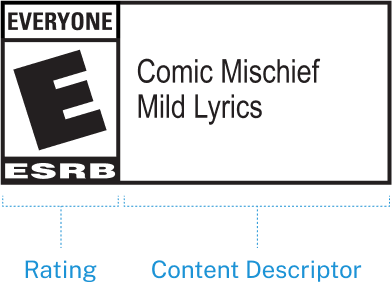
ESRB Video Game Ratings System
| Rating | Meaning |
|---|---|
|
Rating Pending (RP) |
This rating is only used in promotional materials for video games with a tentative or confirmed release date, but that have not yet got a final ESRB rating. |
|
Everyone (E) |
Games that the ESRB decrees describes as "generally suitable for all ages" will get an E-rating. E-rated games may contain infrequent mild or cartoon violence and mild foul language. This rating was known as "Kids to Adults (K-A from 1994 to 1998). |
|
Everyone 10+ (E10+) |
The E10+ rating is given to games the ESRB rates as suitable for those over the age of 10. Games rated at E10+ may contain additional amounts of violence, mild profanity, crude humor, and some sexually suggestive content. |
|
Teen (T) |
The T rating is given to games deemed suitable for anyone over the age of 13. T-rated games may contain moderate violence, including small amounts of blood. Such games may also include mild to moderate profanity, suggestive themes, sexual content, and crude humor. |
|
Mature (M) |
Rated M games are deemed suitable for those over the age of 17. Such games may contain higher impact content than T rated games. Such content would include strong sexual themes and content, partial nudity, and more frequent use of strong profanity. Rated M games may also have intense and realistic violence, including gore, mutilation, blood, and graphic depictions of death. |
|
Adults Only (AO) |
Video games typically only receive an AO rating if they contain graphic nudity, sexually explicit content, or the ability to gamble with real currency. While AO-rated games may also contain extreme violence, very few games have ever been rated AO primarily because of violence. |
Between 1994 and 2018, there was also an Early Childhood (EC) rating. However, this was rarely used, so it was retired. Any existing video game titles rated EC are subsequently re-categorized as rated-E if they are remastered and republished.
| Content Descriptor Name | Description |
|---|---|
|
Alcohol Reference
|
Any reference to alcohol, even the showing of alcoholic drinks |
|
Animated Blood
|
Unrealistic, cartoon-like blood |
|
Blood
|
The portrayal of realistic blood |
|
Blood and Gore
|
The portrayal of realistic blood and/or bleeding body parts |
|
Cartoon Violence
|
Cartoon-like violent actions |
|
Comic Mischief
|
Physically involved comedy or suggestive humor |
|
Crude Humor
|
Humor that players may interpret as vulgar or sexual |
|
Drug Reference
|
Any reference to drugs, even the showing of drugs or drug paraphernalia |
|
Edutainment
|
Entertainment containing an educational element |
|
Fantasy Violence
|
Unrealistic violence that is easily distinguishable from real life |
|
Informational
|
It contains facts and statistics either to enhance the game experience, increase the user's knowledge, or both |
|
Intense Violence
|
Graphic, realistic violence. May include weapons, blood, gore, death, and violence carried out due to drug or alcohol abuse |
|
Language
|
Some use of profanity |
|
Lyrics
|
The game's soundtrack contains lyrics featuring profanity, sexual references, or references to drug and alcohol use |
|
Mature Humor
|
Presence of adult humor |
|
Mild Violence
|
Some depictions of violence, which do not result in blood or death. Mild violence may be realistic or unrealistic |
|
Nudity
|
Depictions of nudity |
|
Partial Nudity
|
Brief or mild depictions of nudity |
|
Real Gambling
|
Possible to use real-life currency and cash to gamble in-game |
|
Sexual Content
|
Mild or brief depictions of nudity or sexual behavior |
|
Sexual Themes
|
References to sex or sexualit |
|
Sexual Violence
|
Depictions and references to violent sexual acts, including rape |
|
Simulated Gambling
|
Possible to gamble in-game but using currency “earned” during gameplay |
|
Some Adult Assistance May Be Required
|
This rating is used on younger age-rated games where very young children may require assistance or guidance to play |
|
Strong Language
|
Explicit or frequent use of profanity |
|
Strong Lyrics
|
The game's soundtrack contains lyrics featuring explicit or frequent profanity, sexual references, or references to drug and alcohol use |
|
Strong Sexual Content
|
Strong depictions of nudity or sexual behavior |
|
Suggestive Themes
|
Sexually suggestive content |
|
Tobacco References
|
Any reference to tobacco products, including depictions of cigarettes |
|
Use of Drugs
|
Depictions of drug abuse or illegal drug consumption |
|
Use of Alcohol
|
Depictions of alcohol abuse or alcohol consumption |
|
Use of Tobacco
|
Depictions of the use of tobacco products, such as smoking a cigarette |
|
Violence
|
Depictions of violence against individuals or communities, including self-harm |
Criticism of
Various Rating Systems
In general, criticism of rating systems worldwide, not just in the United States, comes from the belief that rating bands are too broad.
At the same time, it is well-established that children learn at different speeds.
Two 13-year olds may react entirely differently to depictions of violence and sexual activity, for
example.

Likewise, the TV and film ratings have also been criticized for PG ratings are determined. PG content may feature violence and sexual activity but is, from a rating perspective at least, deemed equally suitable for a five-year-old and a 12-year old child at the same time.
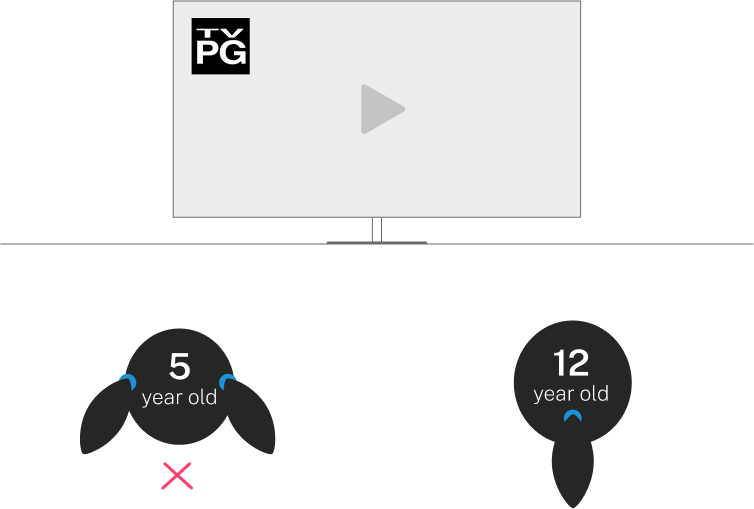
If anything, these criticisms highlight the importance of being aware of the age ratings and specifically of what content is contained within the media our children consume.
The ESRB’s video games rating system has also been regularly criticized. However, it’s received praise for its more detailed use of content descriptors and the presence of the E10+ rating. The E10+ rating goes some way to differentiating games that may be suitable for younger or older pre-teen children.
What can you do
As a Parent?
There’s no denying that helping your children navigate media content and understanding the various age ratings can be a minefield. How can you best assure yourself that your children are only exposed to age-appropriate content across TV, film, and video game platforms?
Whichever way you choose to manage your children’s exposure to media, remember that all ratings are just guides. It’s up to you to decide what is and isn’t suitable for your children. The best approach to determining what is appropriate is to sit down and watch or play alongside them. However, when this isn’t possible, you can have confidence there are plenty of resources at hand for you to use as a guide.



